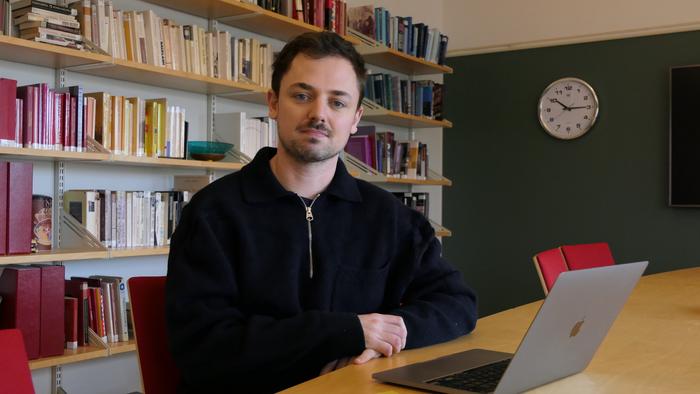Five hundred meters beneath the surface near the village of Forsmark, Sweden, lies a repository containing materials that will remain dangerous for tens of thousands of years. The contents? Spent nuclear fuel — radioactive waste from energy production that poses risks invisible to human senses.
Researchers at Linköping University have tackled an unprecedented challenge: designing a communication system that could potentially span 100,000 years to warn future generations about this hazardous underground site.
“We’re trying to do something that no one has ever done before. The person who eventually reads this might not even be human, but perhaps a kind of AI or something else,” says postdoctoral fellow Thomas Keating, who led the research project alongside Professor Anna Storm at the Department of Thematic Studies, Technology and Social Change.
Their solution is a 42-page document called the Key Information File (KIF) — a bright yellow, oblong guide containing critical information about the nuclear waste repository. The document, which resulted from three years of research, is divided into three sections: summary, critical information, and instructions for the future.
The KIF represents more than just technical documentation. It’s been designed as an artifact meant to endure and engage readers across generations, featuring professional illustrations and even mysterious coded messages on its cover intended to spark curiosity.
This approach reflects a fundamental concern: how do you communicate danger across time spans that exceed recorded human history?
Swedish authorities face unique challenges in managing nuclear waste. While the repository is designed to be sealed and theoretically inaccessible, the researchers acknowledge that “accidental or intentional intrusion, technological failure or existential societal change cannot be ruled out,” making it crucial to preserve knowledge about what lies beneath.
The initiative comes as several European countries develop final disposal solutions for nuclear waste. France and Switzerland are working on similar documentation projects for their repositories.
As language, symbols, and media evolve over time, the researchers have built renewal mechanisms into their design. The KIF explicitly tasks future generations with updating the information and transferring it to new storage media when necessary.
This approach has been named SHIRE (SHare, Imagine, REnew) — encouraging readers to actively participate in preserving and renewing the knowledge rather than merely receiving it passively.
“Perhaps we need a whole new research area for this type of memory study. This could be something for the universities to develop in the future,” Keating suggests, noting that very few people in the nuclear industry currently focus on long-term memory preservation.
While the Swedish Nuclear Fuel and Waste Management Company (SKB) financed the research, the question of long-term responsibility remains open. Keating notes that SKB “does not want formal responsibility but is willing to contribute in some form,” partly because the company isn’t expected to exist beyond the repository’s completion.
The researchers propose updating the document every decade, though it remains unclear who will oversee this process in Sweden.
The document has undergone extensive review “in scientific seminars and in workshops with representatives of clients, the public and industry organizations, nationally and internationally,” according to the report.
Plans are already in place to preserve the Key Information File in The Swedish National Archives. Additionally, it will become part of the Memory of Mankind, an archiving project founded in Austria in 2012 to preserve humanity’s knowledge on durable materials.
“So it will be printed on ceramic tablets and placed in an old salt mine in a mountain in Austria,” Keating explains.
This ceramic preservation echoes ancient methods of record-keeping, bringing the project full circle — using lessons from humanity’s past to protect its future.
The repository itself represents a sobering responsibility. The document plainly states that it contains “materials that are dangerous to humans and other living organisms” because “they are radioactive, and radioactivity is not possible to detect with human senses.”
What makes this communication challenge particularly daunting is that modern humans have never successfully preserved specific information for anywhere near the timespan required. The oldest known written records date back roughly 5,000 years — just 5% of the 100,000 years the nuclear waste will remain hazardous.
The researchers’ work highlights a growing recognition that nuclear energy’s legacy extends far beyond current regulatory frameworks and institutional lifespans. As countries worldwide continue developing nuclear power programs, the question of how to communicate with the distant future becomes increasingly relevant.
While technical solutions focus on containing the physical waste, this project addresses the equally important human element — ensuring that knowledge itself doesn’t decay alongside the radioactive materials.
As January temperatures hover near freezing in Linköping, Keating and Storm’s work reminds us that some responsibilities extend far beyond our lifetimes, requiring imagination, foresight, and humility in the face of time’s vastness.
The complete Key Information File report, titled “Essential Information on the Spent Nuclear Fuel Repository in Forsmark, Sweden,” was published in December 2024 through Linköping University Electronic Press.
If our reporting has informed or inspired you, please consider making a donation. Every contribution, no matter the size, empowers us to continue delivering accurate, engaging, and trustworthy science and medical news. Independent journalism requires time, effort, and resources—your support ensures we can keep uncovering the stories that matter most to you.
Join us in making knowledge accessible and impactful. Thank you for standing with us!

